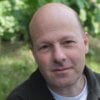Soon Countries Won’t Compete for Cheap Labor; But Robotics - What's New in Robotics this Week - Oct 09

Posted on Oct 09, 2015 7:00 AM. 6 min read time
Why robotics is so important to manufacturing; why Japan is well positioned to benefit from widespread automation; why an AI system scoring at the level of a four year old child is not a disappointment; and more...
Soon Countries Won’t Compete for Cheap Labor—But Robotics (SingularityHUB)
In case you missed the recent report on the impact of automation from BCG Perspectives, there was some interesting follow-up coverage this week courtesy of SingularityHUB.
We are likely to see a double-effect from the rise of automation, particularly in the manufacturing sector:
"nowhere is automation as immediately evident as it is in manufacturing. It’s been going on for decades, most obviously in automotive assembly and heavy machinery. Increasingly, however, more advanced robot factory workers are branching out."
[...]
While capability accounts for what can be automated, however, it’s how much robots cost compared to human labor that drives when they’ll be adopted. Electronics manufacturers are increasingly employing robots because they’re more capable and higher-than-average wages make them relatively more attractive."
So, in the first place, when the cost of purchasing and maintaining a robot falls below the cost of a human worker, we can expect to see widespread adoption of robotics and challenges around technological unemployment.
At the same time, we will see the labor-cost advantage that sustained offshore manufacturing disappear, bringing jobs back to advanced economies.
"The future's manufacturing powerhouses, then," the article concludes "will be those countries in which the robot revolution takes root earliest and moves swiftest".
Hard to disagree with that assessment, no matter what your views are on the societal impact of widespread robotics adoption.
From the report itself:
"We estimate that, as a direct result of installing advanced robots, and depending on the
location, output per worker in manufacturing industries will be 10 to 30 percent higher in
2025 than it is today. This increase will be over and above the productivity gains that can
be expected to come from other measures, such as lean production practices and better
supply-chain management.
The impact on cost is likely to be just as dramatic. We estimate that, because of wider
robotics use, the total cost of manufacturing labor in 2025 could be 16 percent lower, on
average, in the world’s 25 largest goods-exporting economies than they would be otherwise."
Robotics rivalry in gear as Japan aims to lead fourth industrial revolution (Japan Times)
 Japan recently saw the launch of a hotel partially staffed by robots. Source: AP Photo.
Japan recently saw the launch of a hotel partially staffed by robots. Source: AP Photo.
One of the countries best positioned to benefit from increasing automation and the "fourth industrial revolution" is Japan.
As Takuro Morinaga, a professor at Dokkyo University told The Japan Times:
The world is “on the threshold of the fourth industrial revolution, a paradigm shift caused by robotics and artificial intelligence. A country that has a hold on the revolution will control the world”.
The article concedes that Germany's draft "Industry 4.0 Strategy" --which intends to combine the efforts of government and 57 leading German companies to lower manufacturing costs via a combination of IT and robotics-- puts that country in a leading position to benefit from automation. (Deutsche Bank Research produced a fascinating report on Industry 4.0 in April.)
However, the article notes that Japans Ministry of Economy, Trade and Industry has plans to develop a similar program.
Japan has other reasons to be bullish about its prospects:
Shipments of industrial robots by Japanese manufacturers totaled ¥340 billion in 2012, capturing a global market share of around 50 percent. Robots are widely used in in electronic and automobile assembly plants.
The government is planning to develop AI-equipped robots that can talk to each other over the Internet, and wants companies of all sizes and backgrounds to get involved.
The Ministry forecasts that the domestic market for robots will be around ¥9.7 trillion in 2035.
IQ Test Result: Advanced AI Machine Matches Four Year Old Child's Score (MIT Technology Review)
The human-like abilities of artificial intelligence systems have advanced rapidly in recent years, but IQ test equivalences are not one of their strengths, according to a research team led by Stellan Ohlsson at the University of Illinois.
Presented with a specially modified version of the child IQ test known as the Wechsler Preschool and Primary Scale of Intelligence, the AI (MIT's ConceptNet4) scored at the level of an average four year old.
The test --which measures children’s performance in information, vocabulary, word reasoning, comprehension, and similarities-- exposed some interesting limitations in the AI.
For example, when asked "Why do we shake hands?" the AI performed a search based on three concepts --two one-word concepts of “shake” and “hand” and one two-word concept of “shake hands”. When using all of these concepts to search for an answer, it produced the answer… “epileptic fit”.
However, when the machine was forced to consider only single concepts, it provided more appropriate answers such as: ”thanks”, ”flirt" and "meet friend".
Overall, ConceptNet performed well on vocabulary and similarities, middling on information, and poorly on word reasoning and comprehension. .
There is a notable caveat to this research, the article notes. It was conducted on a 2012 version of ConceptNet4 and a lot has happened since then in AI, including a shift in AI design away from knowledge gathering systems to those that are more learning-driven.
The research paper also received coverage on the BBC, which noted:
Sometimes its answers appeared completely illogical - in response to the question "Where can you find a teacher?", it came back with "piano" and "band".
The researchers could not explain such anomalies, but they did suggest ways that the test could be improved - for instance, inputting questions using natural language via a virtual assistant such as Siri or Cortana.
Results like these are often reported with a disappointed tone, as though AI researchers should be doing better.
In the first place, four year-olds are more intelligent than we give them credit for and artificially recreating that intelligence is no mean feat.
By way of comparison consider the limitations presented by this 17th Century automaton:
But perhaps even more importantly, the exciting reality of human-robot collaboration is that we can always combine the best of human capabilities with the best features of robotic solutions.
AI progress is exciting. More advanced and humanlike forms are inevitable, but in certain contexts and depending on the problems one is trying to solve, collaboration between humans and robots might be one of the available solutions.
The paper: Measuring an Artificial Intelligence System’s Performance on a Verbal IQ Test for Young Children.
And Finally...

AVIC's "Swift Gazelle" flying robot car. Credit: Daily Star
CHINA REVEALS FLYING ROBOT CAR (Popular Science); What Does the VW Scandal Mean for RoboCars? (Robohub); 5 Insightful Articles About A.I., Robotics, And The Jobs Debate (RobotEnomics); Senate Bill Criminalizes ‘Reckless’ Drone Flights (sUAS News). 







Leave a comment